The Royals bullpen has been a source of frustration all season for fans.
It makes sense, of course, when one looks at the relief pitching numbers.
The Royals bullpen currently ranks 19th in reliever ERA, 26th in WHIP, and 30th in K/9. Royals GM JJ Picollo invested a lot of resources into veterans such as Will Smith, Chris Stratton, Nick Anderson, and John Schreiber to help boost a group that ranked 29th in bullpen fWAR a season ago. Unfortunately, the gains have only been minor and, to make matters worse, inconsistent.
While the bullpen is much maligned in 2024, based on their June performance, the group may soon turn a corner.
On June 18th, the Royals bullpen ranks 11th in ERA with a 3.47 mark. The long ball still hurts the group, as their 15.9% HR/FB rate is the third-worst mark in baseball. That said, they have gotten some batted-ball luck this month (.234 BABIP), and their 9.8% BB% in June is 1.1% lower than their overall season mark.
One reliever who has done well so far in June is Smith, who leads Royals relievers in fWAR as of June 18th.

Smith’s overall numbers still aren’t great. In 25 games and 21.2 IP, he has a 5.40 ERA and an fWAR of 0.1. However, he has put his rough April behind him and looks more like the reliever who helped the Braves, Astros, and Rangers win World Series championships the past three seasons.
Therefore, is Smith ready for more high-leverage opportunities again? Or is this performance just a flash in the pan that will be exposed in higher-pressure situations?
Smith’s Improvement on the Four-Seamer
There’s no question that Smith had a lackluster start to the 2024 season. Dubbed as the Royals closer on Opening Day, Smith struggled out of the gate, posting a 10.61 ERA in 9.1 IP in March/April, according to Fangraphs splits.
However, as Royals fans can see in the table below, things have improved much in May and June.

After posting a 6.37 FIP in March/April, his FIP improved to 3.28 in May. Granted, he benefited from a low BABIP (.208) and high LOB% (75%), and his xFIP of 5.94 was actually worse than his mark in March/April (5.86). His low K/BB ratio of 1.33 didn’t help that xFIP and certainly didn’t encourage Royals fans who were doubtful that Smith could be a positive asset in the bullpen.
However, in June, it’s been a different story.
Smith has improved his K/BB ratio to 6.00, and his K% has risen from 12.9% in May to 37.5% in June. As a result, his FIP is a remarkable 0.38, and his 1.69 xFIP shows that his FIP isn’t benefitting from batted ball luck.
Smith’s four-seamer, with improved velocity and effectiveness this month, has been critical to his success in June.
Here’s a look at the gains Smith has seen in his four-seamer velocity since the start of the season via Savant.
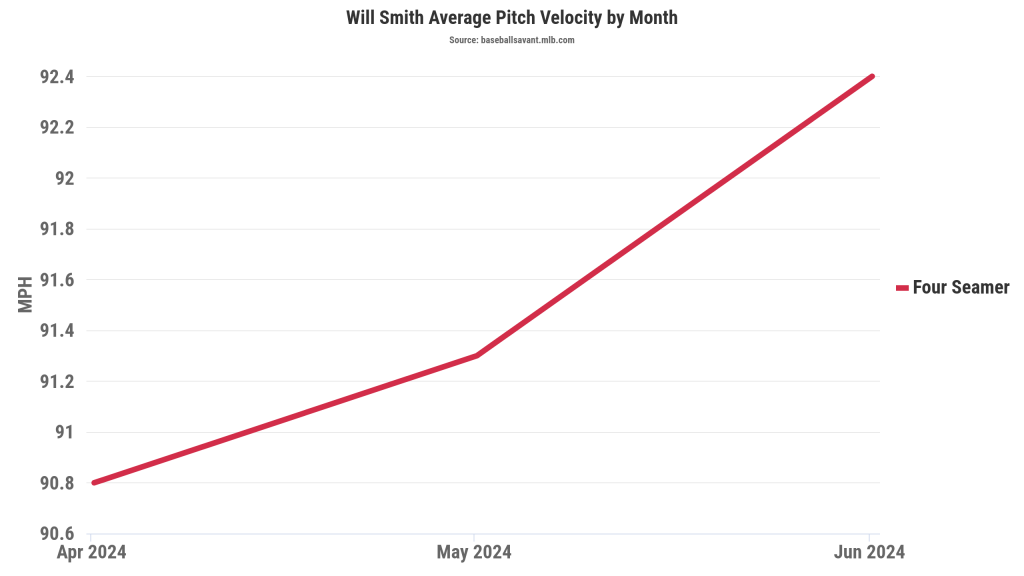
Smith’s four-seam velocity averaged 90.8 MPH at the start of the season. This month? It’s averaging 92.4 MPH, roughly the same velocity his four-seamer averaged last year in Texas.
The four-seamer isn’t averaging more whiffs compared to previous months. However, there has been an uptick in the put-away rate, as the 33.3% rate in June is much better than the 12.5% mark in May and the 15.4% mark in April.
Overall, the four-seamer, despite not having “premium” velocity, has showcased some solid pitch characteristics this season, as evidenced by his pitch quality metrics via PLV data.
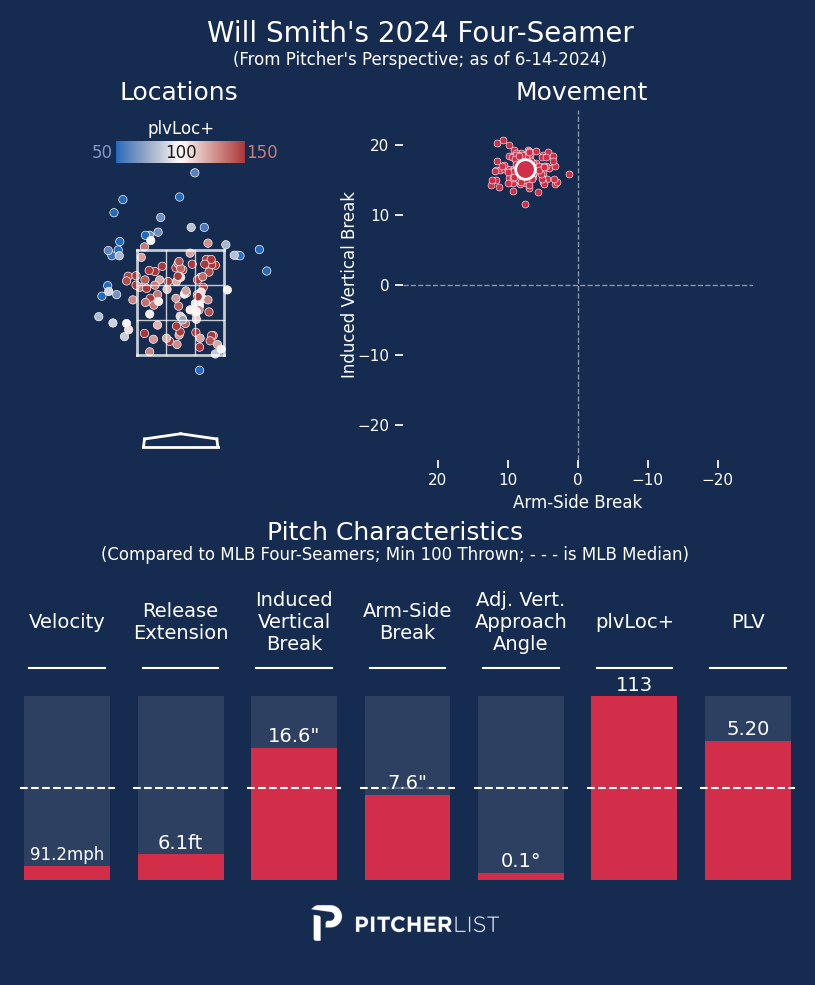
Smith’s four-seamer showcases above-average induced vertical break, plvLoc+ (i.e., ability to be located), and PLV. The arm-side break has also demonstrated an average arm-side break, which isn’t a bad quality to have in a four-seamer.
His primary fastball offering has been one of the best pitches in his repertoire this season on a PLV end, even though he doesn’t throw it nearly as much as his slider.
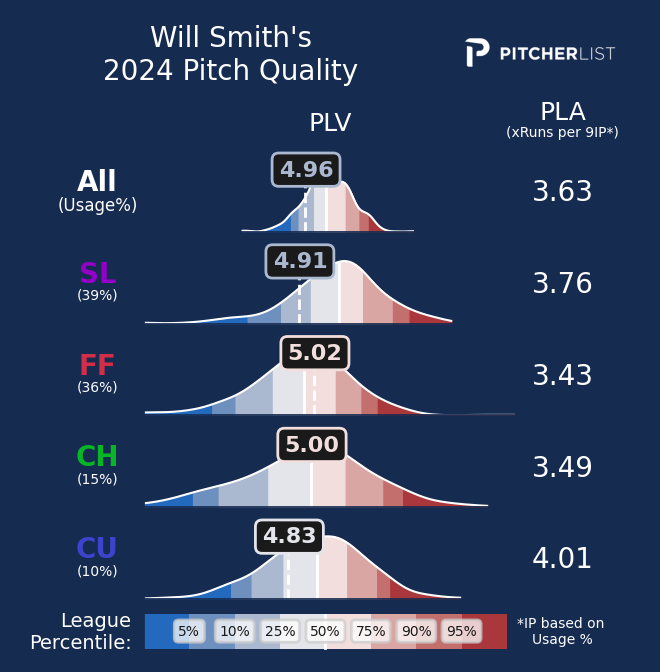
On a PLV basis, his four-seamer has been his only above-average offering. His changeup has been roughly average, with a 5.00 mark. Lastly, his slider and curveball have been below-average pitches, as evidenced by their 4.91 and 4.83 marks, respectively.
The main issue with Smith’s four-seamer is that while he pounds the zone with it for strikes, he can leave it in hittable areas too often. His heatmap data of the four-seamer illustrates that problem.
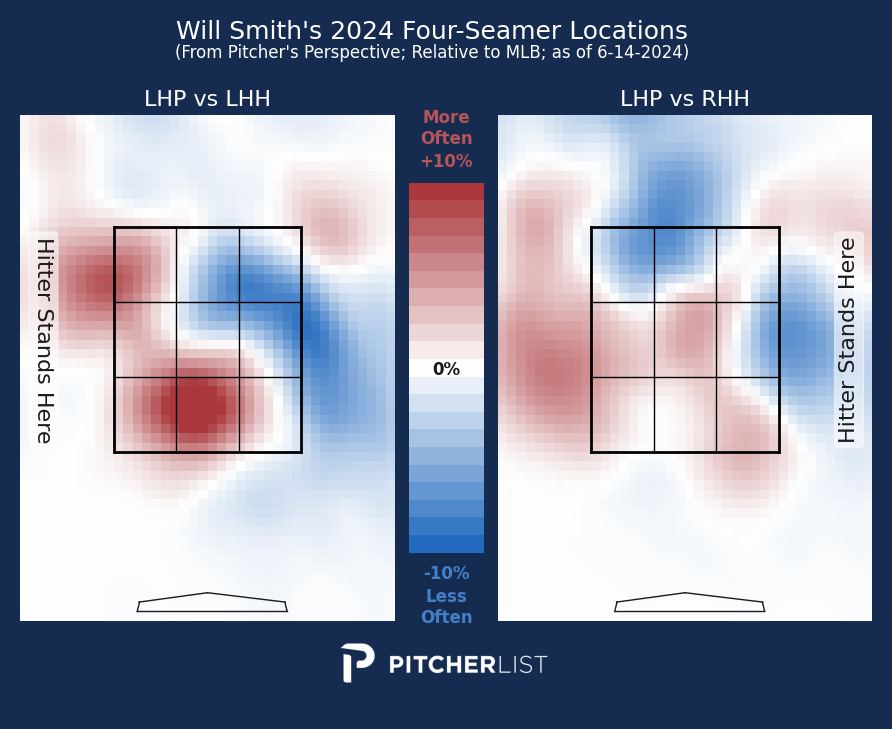
Against left-handed hitters, Smith has been able to keep the four-seamer either up and inside or down and low in the zone. Unfortunately, against right-handed hitters, he has left the ball in the middle of the zone way too much.
Those mistakes with the four-seamer, especially against right-handed hitters, have led to extra-base hits, like this one below, which came from Detroit utility man Andy Ibanez back in May at Kauffman.
On the other hand, here’s an example of Smith locating the four-seamer up in the zone to AL shortstop leading vote-getter Gunnar Henderson in April at the K. His supreme location (and increased velocity) of the four-seamer led to a punch out of Henderson.
It’s not necessarily a quality issue with Smith’s four-seamer. Instead, it’s more of a command one. When Smith can command his four-seamer effectively, he, in turn, can be the solid reliever the Royals need in the late innings.
Thankfully, that four-seam command is starting to develop a bit in June and could get even better as Smith continues to accumulate more innings in 2024.
The Slider Still a Weapon (Albeit With Flaws Against Righties)
Smith throws the four-seamer 36% of the time, his second-most-used pitch. His slider has been his most-used pitch this season, at 39%.
Despite sporting below-average PLV on the breaking offering, one can understand why Smith utilizes the slider so much.
He generates a whiff rate of 36.9% and a hard-hit rate of 9.5% with the pitch, which are both ridiculous marks. However, much of this can be credited to Smith’s supreme command of the pitch rather than the pitch’s overall quality.
Here’s a look at the slider’s characteristics and his pitch heatmap this season.
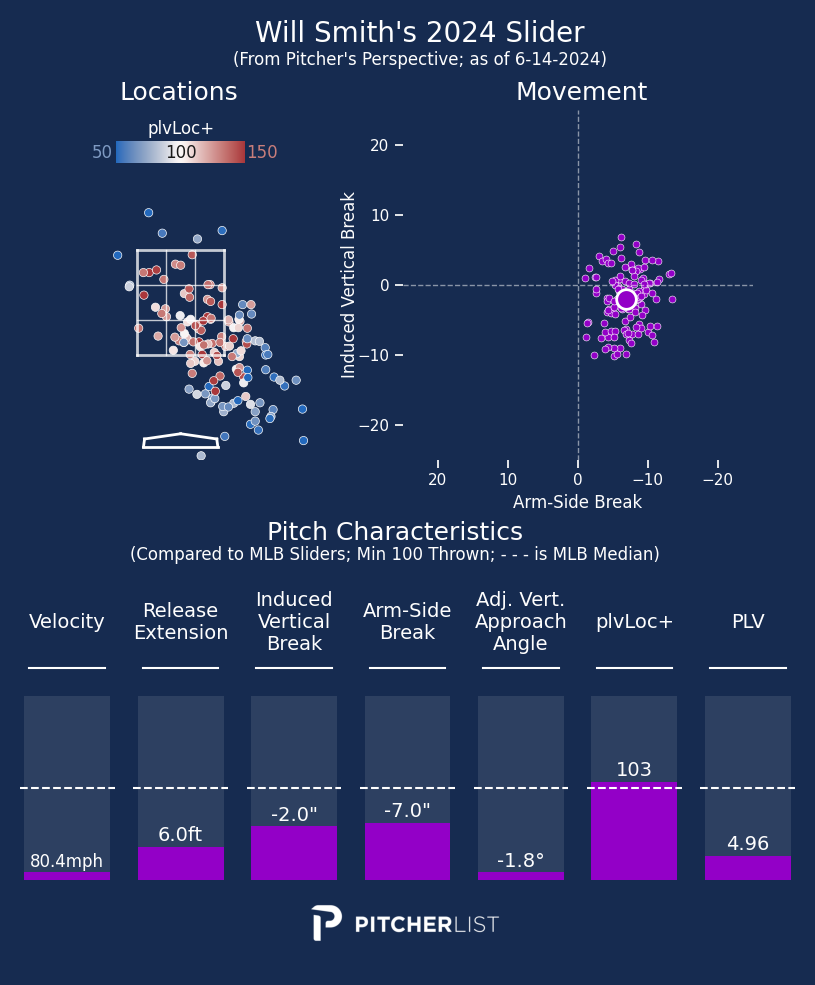
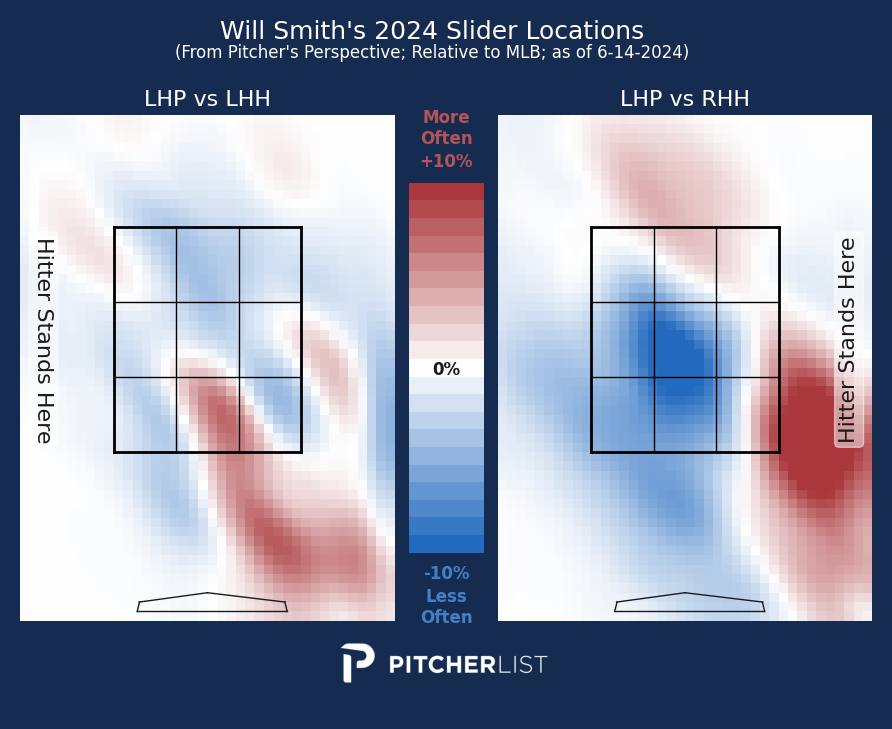
Smith does an excellent job of locating the pitch down in the zone and into right-handed batters, which generates a lot of swing-and-miss. He leaves the slider up a little more for lefties but still keeps it down and away from them mostly.
Even when left-handed hitters make contact with sliders in the zone, they don’t do much with it. Lefties are only posting an xwOBA of .138 on the slider this season. Righties have been much more successful on the flip side, as they are producing a .337 xwOBA on the slider this year.
Despite those issues with the sliders against right-handed hitters, he still is producing a whiff rate of 30.4% with the slider against. So, it still remains his best swing-and-miss pitch against hitters. However, he is only posting a put-away rate of 9.5% with the slider against right-handed hitters. That is not a good sign, especially since Smith needs to be able to pitch against hitters from both sides of the plate in high-leverage situations.
Much like his fastball, his slider command has been a work in progress this year, especially against righties. Here’s a look at his slider heatmap against right-handed hitters on base hits allowed this year via Savant.
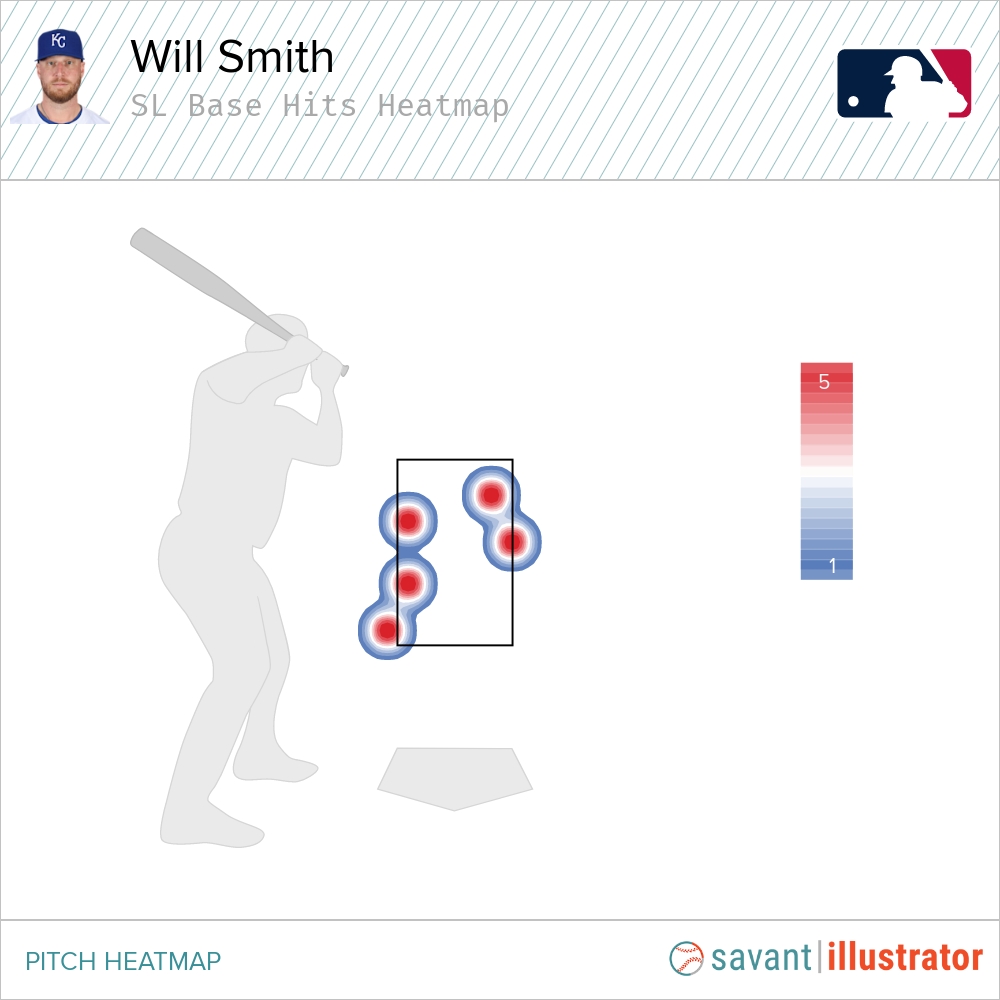
Smith has to minimize those mistakes with the slider against right-handed hitters to regain regular opportunities in high-leverage situations. When he correctly locates the slider, it remains a tough pitch to hit, even if it doesn’t possess the pitch quality it once had during his earlier years in the Majors.
In the GIF compilation below, notice how Smith effectively utilizes the slider against both right-handed (Yoan Moncada of the White Sox) and left-handed (Kyle Manzardo of the Guardians) batters to generate swinging strikes.
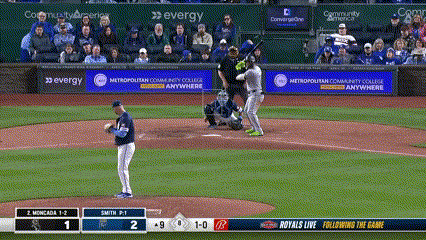
When commanding the pitch appropriately, Smith can be an effective late-innings reliever, even a possible closer.
Unfortunately, that hasn’t happened enough this year, though he’s trending in the right direction in June. His slider whiff percentage against right-handed hitters has spiked positively this month after declining significantly in May.
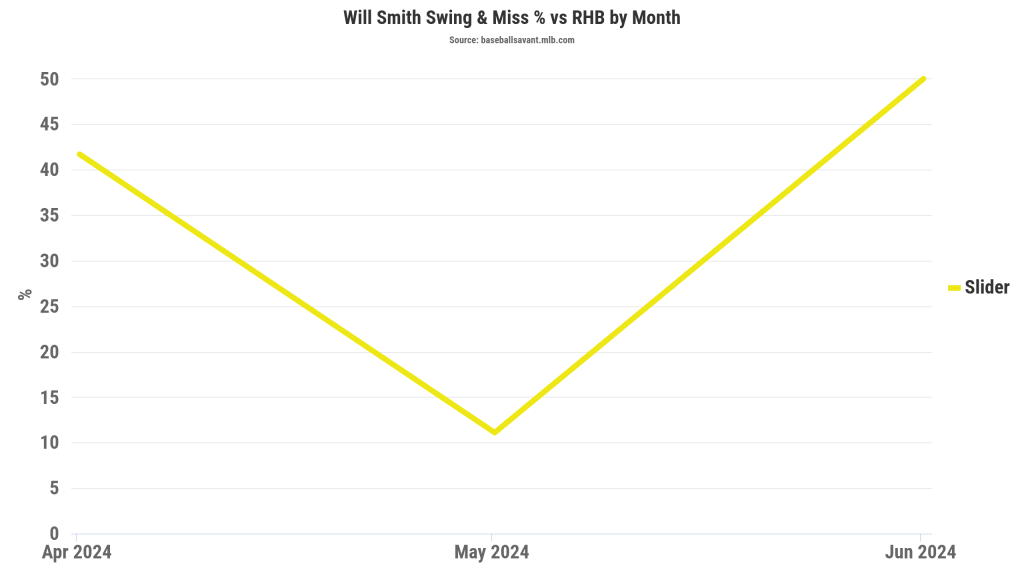
Smith was getting whiffs with the slider against righties in April, so perhaps May was just a blip on the radar.
If Smith finishes strong in this area in June, then Royals fans can be more comfortable with Smith pitching in the late innings for the Royals in July and beyond.
How Does Smith Stack Against Other Lefty Options?
Smith seems to have lost some ground to other left-handed bullpen options, such as Angel Zerpa and Sam Long.
Zerpa has a 1.98 ERA and 0.3 fWAR in 27.1 IP, and Long has 0.00 ERA and 0.1 fWAR in 9.2 IP. Both have benefitted from some batted ball luckiness this year, as Zerpa has a 3.41 FIP and Long has an FIP of 2.84. Therefore, they may not be as good as their ERA indicates, but Royals fans have to give credit to both of them for putting up solid results.
On a PLV end, though, the quality of Zerpa and Long’s repertoire isn’t much more impressive than Smith’s despite their much better metrics.
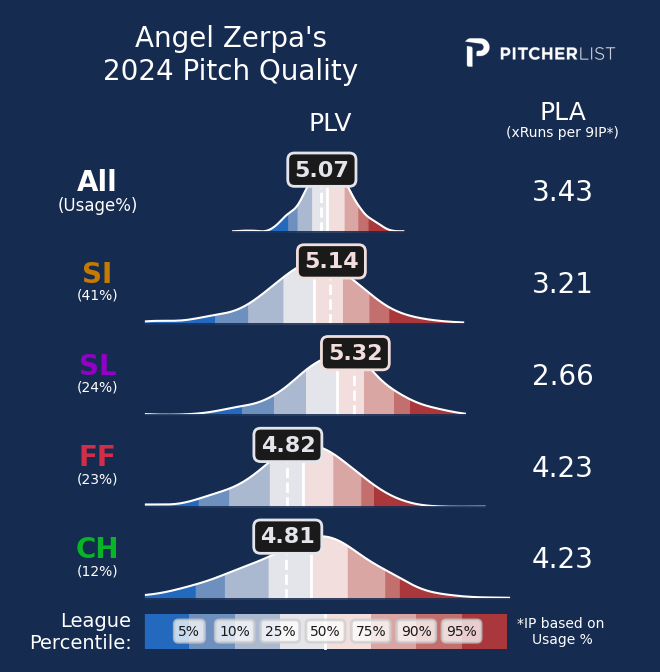
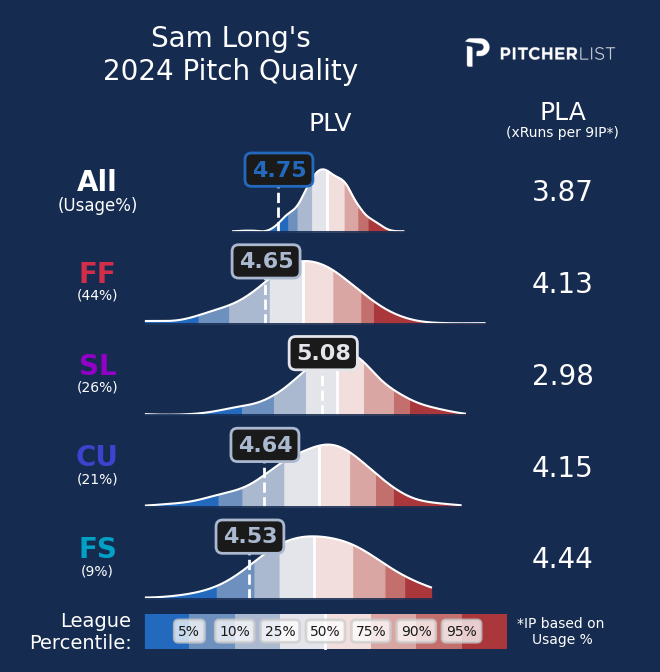
Both Zerpa and Long have better sliders than Smith on a PLV end. However, their four-seamers are much worse offerings, which could soon result in some regression for Zerpa and Long, especially when their command on that pitch wanes (or when opposing hitters adjust).
I think Royals fans are justified in celebrating what Zerpa and Long are doing. They have obviously come through in some key moments, and it seems like Matt Quatraro trusts using them in those high-leverage spots as well (especially Zerpa).
It wouldn’t be surprising to see Zerp and Long’s performance stagnate a little in the coming weeks and/or months. The stuff is still dicey for both of them, though Royals fans can be more encouraged about Zerpa’s outlook than Long’s (which makes sense considering Long signed as a Minor League free agent in the offseason).
Another left-handed arm in the Royals system that has gotten a lot of buzz has been Walter Pennington, who’s been absolutely dominating in Triple-A Omaha.
In 27 appearances and 46.1 IP, Pennington has a 1.94 ERA, a 38.8% K%, a 30.6% K-BB%, and an FIP of 2.62. Furthermore, Pennington is an incredible human being who is a supreme student of the game (Preston Farr, Jared Perkins, and I got to interview him last month for “Farm to Fountains”). He is easy to root for, and it makes sense that Royals fans are clamoring for him to make his MLB debut.
On the other hand, though, I worry about his pitches’ quality as they transition to the MLB level.
Kyle Bland’s PLV model now has developed charts for Triple-A pitchers and their respective pitches. Pennington’s metrics are intriguing, especially when looking at his three primary pitches: slider, cutter, and sinker.
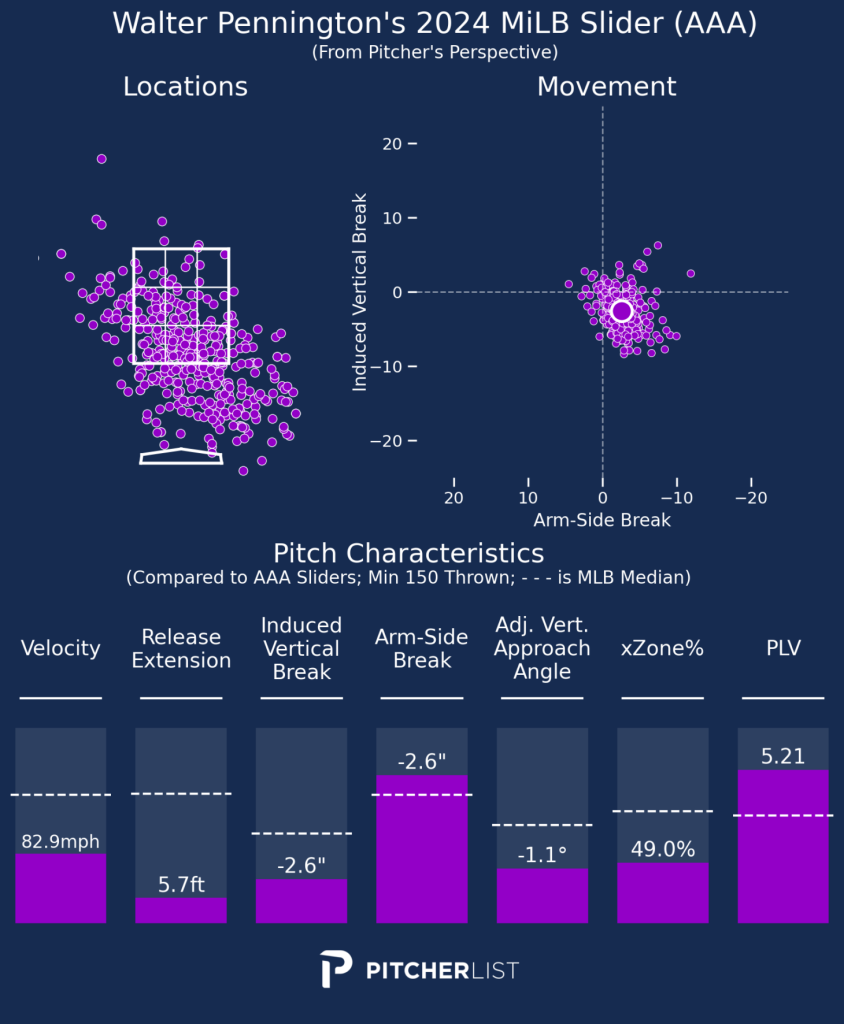

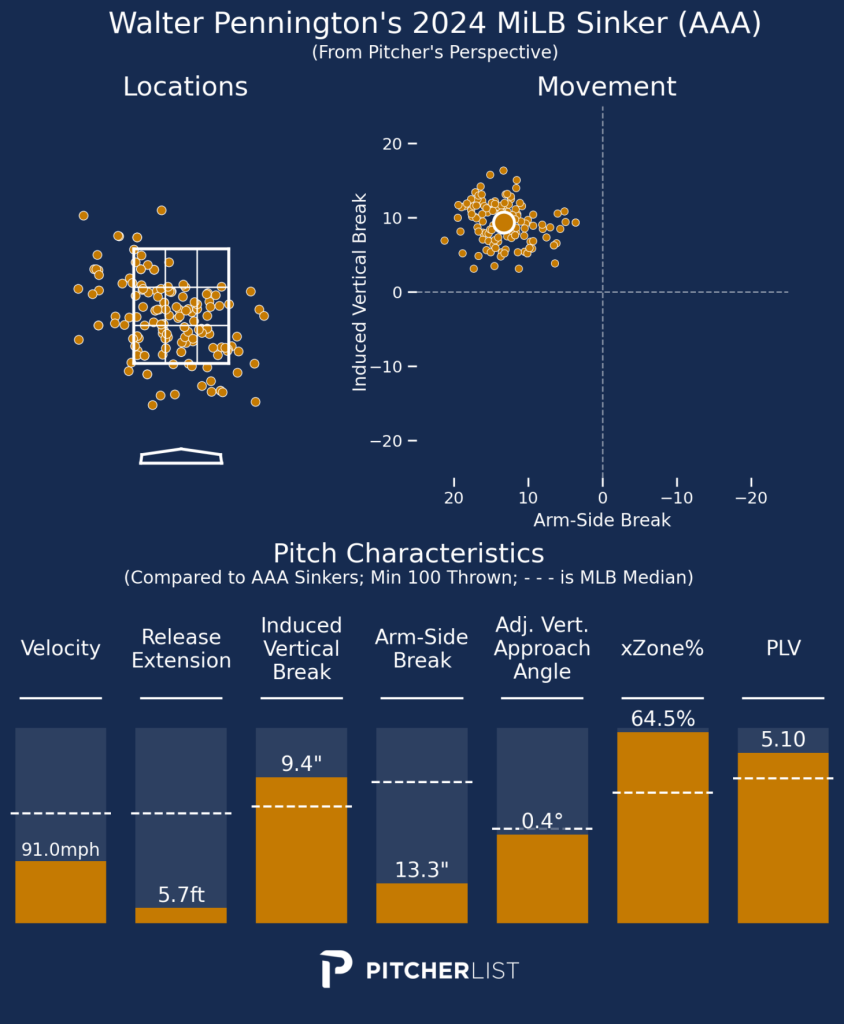
The PLV metrics on all three pitches are above average, which is encouraging.
That said his slider and sinker both sport below-average velocity at the Triple-A level. In addition, while his cutter and sinker both “raid the zone” effectively, they don’t have a significant extension. That limits the velocity outlook on the pitches, which could make them more hittable at the Major League level.
In the big leagues, Pennington could still be a fantastic reliever for the Royals. However, based on the PLV data, he still has some flaws, and his outlook isn’t cemented. With the Royals clearly in the playoff hunt, it makes sense why they would prefer to see a proven veteran like Smith turn it around first rather than give someone like Pennington a chance, especially with other “less proven” lefties already in the bullpen in Zerpa and Long.
Smith is trending in the right direction this month, and his stuff and track record should keep him in the hunt to gain more high-leverage opportunities soon, especially as other Royals relievers like John Schreiber and James McArthur have struggled lately in those spots. If his progress continues, Royals fans shouldn’t be surprised to see Smith back to pitching in setup or closing situations by the end of June or the start of July.
Then again, if he should regress back to April and May form?
Well, maybe Pennington will get that opportunity to pitch out of the bullpen in Smith’s place in July, even if the outlook at the Major League level may be hazy for Pennington.

[…] The Royals Reporter, Kevin O’Brien asks “Is Will Smith Ready for High Leverage Opportunities Again?” […]
LikeLike